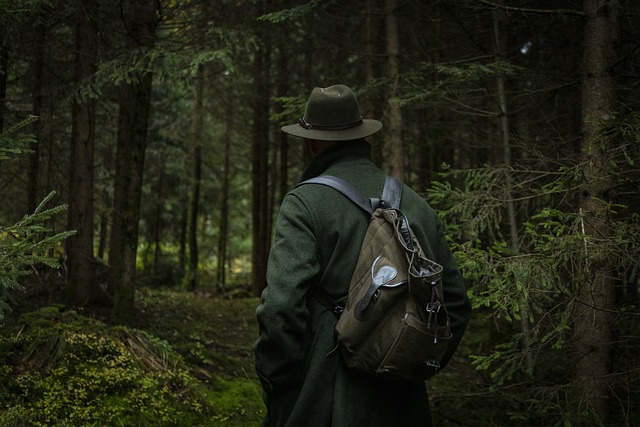When venturing into the great outdoors, it’s crucial to adhere to the Leave No Trace principles, which promote responsible and sustainable use of our natural spaces. One aspect of these principles, often not discussed due to its sensitive nature, is how to properly manage human waste while hiking. As a person with many years of experience in hiking and camping, I am here to guide you through the best practices for dealing with this essential and unavoidable need in a way that protects the environment and respects your fellow hikers.
In this article, I will explore the reasons why proper human waste disposal is so important, the steps you should take to prepare for your hike, how to choose the right spot for doing your business, digging a cathole, disposing of toilet paper, maintaining hygiene on the trail, and alternative methods for managing waste. I will also discuss the role of education and advocacy in promoting responsible outdoor behavior.
Why Proper Human Waste Disposal Matters
Taking the time to dispose of human waste properly when hiking is essential for several reasons. It not only preserves the pristine beauty of the environment but also safeguards the health and well-being of both humans and wildlife. Here, I will discuss the environmental and social impacts of improper human waste disposal.
Environmental Impact:
- Contamination of water sources: Human waste carries harmful bacteria and pathogens that can contaminate nearby water sources, such as rivers, lakes, and streams. This contamination poses a risk to the health of hikers, campers, and local communities who rely on these water sources for drinking and other uses.
- Spread of disease: Improperly disposed of waste can contribute to the spread of diseases like Giardia, E. coli, and Cryptosporidium, which can cause severe gastrointestinal issues for those who come into contact with contaminated water or soil.
- Negative effects on wildlife: Human waste can attract wildlife and alter their natural behavior, making them more susceptible to disease, dependent on human food sources, and potentially aggressive. Proper waste disposal helps maintain the delicate balance of ecosystems and protects wildlife from harm.
Social Impact:
- Maintaining trail cleanliness: By disposing of waste properly, hikers can preserve the natural beauty of the environment and maintain the cleanliness of the trail for others to enjoy. No one wants to encounter someone else’s waste while exploring the great outdoors.
- Respect for fellow hikers: Proper waste disposal is a sign of respect for other hikers and campers who share the trails and campsites. By taking responsibility for our actions, we can contribute to a positive outdoor experience for everyone.
Preparing for Your Hike
Before hitting the trails, it’s crucial to be well-prepared for your journey, including being ready to manage your waste responsibly. Here are some steps to take as you prepare for your hike:
Understanding Trail Regulations:
- Researching rules and guidelines: Familiarize yourself with the specific rules and regulations regarding human waste disposal in the area where you plan to hike. Different parks, forests, and wilderness areas may have unique requirements or restrictions.
- Adhering to specific area requirements: Once you understand the rules and guidelines, ensure that you follow them closely. Regulations are in place to protect the environment and preserve the outdoor experience for everyone.
Packing the Essentials:
When preparing your hiking gear, be sure to include the necessary items for proper waste management. Here are 4 essentials to pack:
- Toilet paper or biodegradable wipes: Bring along a sufficient amount of toilet paper or biodegradable wipes for your journey. If using toilet paper, it’s a good idea to remove the cardboard roll and pack the paper in a sealable plastic bag to keep it dry.
- Small trowel or shovel: A lightweight and compact trowel or shovel is essential for digging catholes to bury your waste. There are various options available, including collapsible or foldable designs that save space in your pack.
- Hand sanitizer or soap: Bring hand sanitizer or biodegradable soap to clean your hands after using the bathroom. Good hygiene is crucial to prevent the spread of disease on the trail.
- Sealable plastic bags: Pack a few sealable plastic bags (e.g., ziplock bags) to store used toilet paper or wipes if you need to pack them out. A double-bagging system can help contain odors and ensure that your backpack remains clean.
Selecting the Right Spot
Choosing the right location to do your business is crucial in minimizing the environmental impact of your waste and respecting the privacy of fellow hikers. Here are some factors to consider when selecting the ideal spot:
Distance from Water Sources: Ensure that you are at least 200 feet (about 70 adult steps) away from lakes, rivers, streams, or any water sources to prevent contamination. This distance helps protect water quality and reduces the risk of waterborne illnesses caused by harmful bacteria and pathogens.
Distance from Trails and Campsites: It’s essential to maintain a similar distance of 200 feet from trails, campsites, and other high-use areas. By doing so, you help preserve the natural beauty of the environment and respect the privacy and experience of other hikers and campers.
Privacy Considerations: Choose a spot that offers some degree of privacy from the trail and other hikers. Dense vegetation, rocks, or small hills can provide natural cover while you take care of business. Remember to be discreet and considerate of others who may be nearby.
Soil Type and Impact on Decomposition: Opt for an area with rich, organic soil, which will aid in the decomposition of your waste. Avoid rocky terrain, compacted soil, or areas with shallow topsoil, as these conditions can hinder the breakdown process and increase the risk of environmental contamination.
Digging a Cathole
Once you have selected a suitable spot for your business, it’s time to dig a cathole. A cathole is a small, shallow hole used to bury human waste and toilet paper. Here are some key factors to consider when digging a cathole:
Proper Depth and Size: The ideal depth for a cathole is 6-8 inches, which is deep enough to allow for proper decomposition and reduce the risk of wildlife digging up the waste. The hole should also be 4-6 inches in diameter, which is big enough to accommodate your waste and toilet paper.
Techniques for Digging: To dig a cathole, use your small trowel or shovel to create a hole in the soil. Dig the hole to the proper depth and size, and then loosen the soil at the bottom of the hole to aid in decomposition. After using the cathole, cover it with the loose soil, and then camouflage it with natural materials like leaves, twigs, or rocks.
Preserving the Natural Environment: When digging a cathole, it’s important to avoid damaging any vegetation, tree roots, or rocks. If there are any large rocks or roots in the way, consider finding another location to dig your cathole. Be sure to cover and camouflage the cathole completely to prevent wildlife from being attracted to the site.
Here’s Why Do You Bury Poop When Camping?
Properly Disposing of Toilet Paper and Wipes
Proper disposal of toilet paper and wipes is essential in minimizing environmental impact and preserving the natural beauty of the environment. Here are some considerations for disposing of these materials:
Options for Disposal:
- Packing out used materials: If the area where you are hiking does not allow for catholes, or if the soil conditions are not conducive to decomposition, pack out your used toilet paper or wipes in a sealable plastic bag. This option ensures that no waste is left behind and protects the environment from contamination.
- Burying materials in a cathole: If you have dug a cathole, dispose of used toilet paper and wipes in the hole before covering it up. Be sure to use only small amounts of toilet paper and dispose of it in layers to prevent clogging the hole.
Considerations for Burning Used Materials: Burning toilet paper or wipes is not recommended, as it can pose a fire hazard and may not completely incinerate the material. If you do choose to burn your used toilet paper or wipes, be sure to do so in a safe location and follow any local regulations regarding campfires.
Importance of Using Biodegradable Products: When choosing toilet paper or wipes, opt for biodegradable and unscented products that will break down more easily in the environment. Avoid using baby wipes or wet wipes, which may contain plastic fibers and do not break down easily, causing lasting harm to the environment.
Clean Up and Sanitation
Maintaining proper hygiene while hiking is crucial in preventing the spread of disease and promoting a healthy outdoor environment. Here are some guidelines for clean-up and sanitation:
Handwashing Techniques:
After using the bathroom, wash your hands thoroughly with soap and water, or use hand sanitizer if water is not available. Follow these steps for effective handwashing:
- Wet your hands with clean water and apply soap.
- Rub your hands together to lather the soap and scrub for at least 20 seconds, covering all surfaces of your hands and fingers.
- Rinse your hands thoroughly with clean water.
- Dry your hands with a clean towel or allow them to air dry.
Importance of Maintaining Hygiene on the Trail: It’s crucial to maintain good hygiene on the trail to prevent the spread of disease and minimize your impact on the environment. Avoid contaminating water sources, campsites, and high-use areas with waste, and always pack out any used toilet paper or wipes.
Pack Out Sanitary Products: Sanitary products, such as tampons or pads, should be packed out and disposed of properly. Do not bury or burn these items, as they can take years to decompose and harm the environment.
Alternative Human Waste Disposal Methods
In some situations, traditional catholes may not be an option, such as when camping in heavily populated areas, above the tree line, or in areas with limited soil. Here are some alternative human waste disposal methods to consider:
Portable Toilet Systems: Portable toilet systems, such as a wag bag or a human waste disposal system, can be a good alternative in areas where traditional catholes are not an option. These systems are designed to be carried out with you and are a practical solution for managing waste in alpine and desert environments.
Wag Bags and Other Pack-Out Options: Wag bags are disposable, odor-proof bags designed for human waste disposal. They can be packed out in your backpack and disposed of in a trash can or other appropriate location. Other pack-out options include products like poop tubes or waste storage bags, which are designed to hold waste and be carried out.
Knowing When to Use Alternatives: When camping in areas where traditional catholes are not an option, it’s essential to be prepared with alternative waste disposal methods. Be sure to research the rules and regulations of the area before your trip and pack out all waste if required.
Educating Others and Encouraging Responsible Behavior
As outdoor enthusiasts, it’s our responsibility to educate ourselves and others on Leave No Trace principles and promote responsible behavior. Here are some ways to spread awareness and encourage others to practice responsible waste management:
Lead by Example: The most effective way to promote responsible behavior is by leading by example. Practice Leave No Trace principles on the trail, and take the time to explain your actions to others. By demonstrating responsible behavior, you can inspire others to do the same.
Spread the Word: Spread awareness of the importance of responsible waste management by sharing information with friends, family, and fellow hikers. Share articles, books, and resources that promote Leave No Trace principles, and discuss responsible waste management with those who may be new to the outdoors.
Participate in Local Clean-Up Efforts: Participating in local clean-up efforts is a great way to give back to the community and promote responsible waste management. Join a local clean-up event or organize one in your community to show the importance of keeping natural spaces clean.
Support Organizations That Promote Responsible Behavior: There are many organizations that work to promote Leave No Trace principles and responsible outdoor behavior. Consider supporting these organizations by volunteering, donating, or spreading awareness of their work.
Conclusion
Managing human waste while hiking is an essential part of adhering to Leave No Trace principles and promoting responsible outdoor behavior. By following the guidelines outlined in this article, you can minimize your environmental impact, respect the privacy of fellow hikers, and maintain a positive outdoor experience for yourself and others.
Remember to research the specific rules and guidelines for the area where you plan to hike, pack the necessary essentials, choose the right spot for your bathroom break, dig a cathole, properly dispose of toilet paper and wipes, maintain hygiene on the trail, consider alternative waste disposal methods, and promote responsible behavior through education and advocacy.
By taking responsibility for our actions and demonstrating responsible behavior, we can protect and preserve the natural beauty of our outdoor spaces for generations to come.
Nature’s Restroom: How to Poop in The Woods Without Toilet Paper










